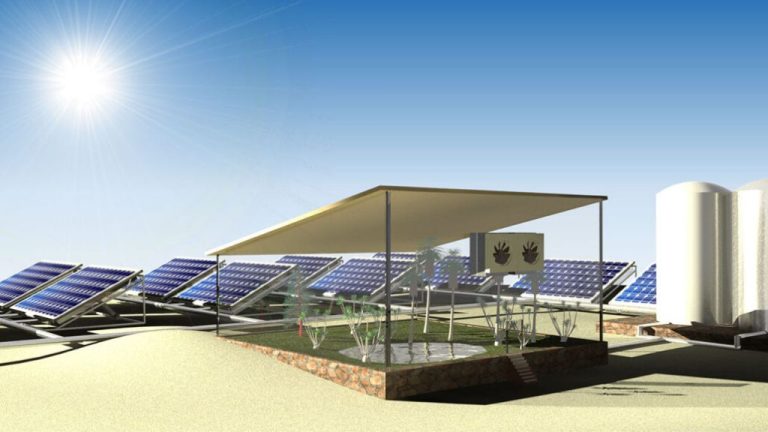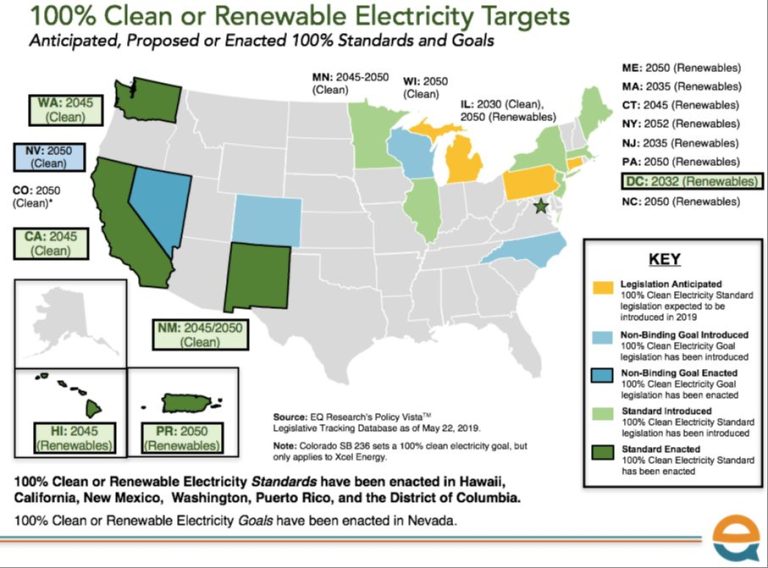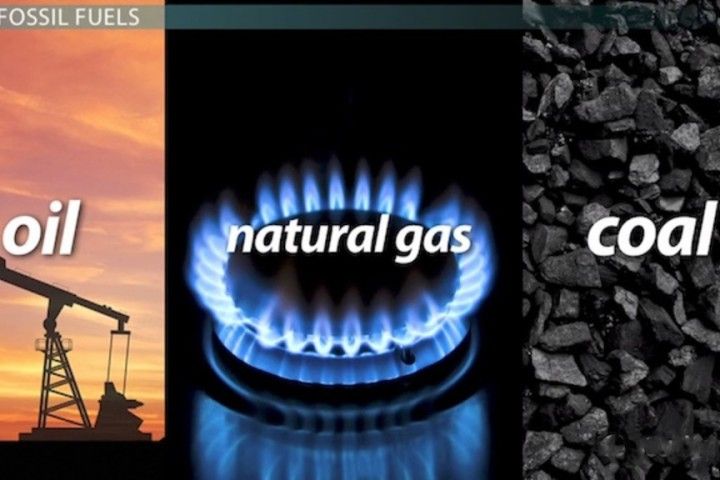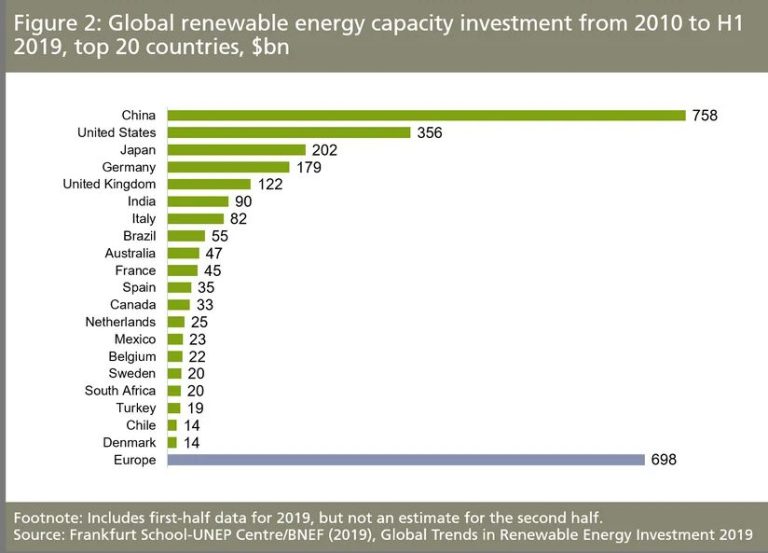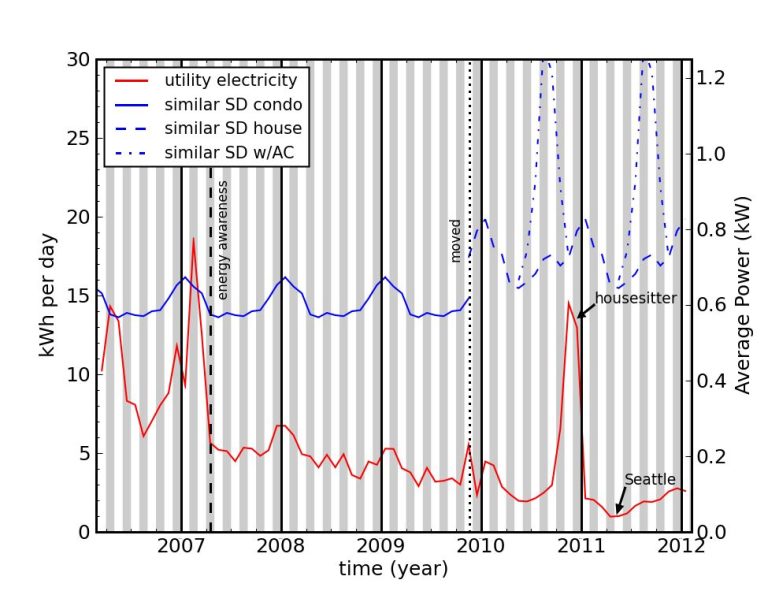Is Renewable Energy Unlimited
Renewable energy has gained immense popularity in recent years as people become more conscious of the environmental impact of traditional fossil fuel sources. But with this rise in demand, questions have arisen about its sustainability and limitations. Is renewable energy truly unlimited, or are there constraints that we must consider? In this blog post, we will delve deeper into the concept of renewable energy and explore whether it is a sustainable long-term solution for our planet’s energy needs. We will also discuss various types of renewable energy sources currently being used and their potential for providing an endless supply of power to meet our growing demands. So buckle up and get ready to learn why the answer to the question “is renewable energy unlimited?” isn’t so clear cut after all.
The Truth About Renewable Energy And Its Limitless Potential
The reality is that renewable energy does hold tremendous potential for powering our planet for generations to come. But it is important to understand that even though it is technically limitless, there are still constraints that must be taken into account.
Solar power, for instance, utilizes the sun’s energy to generate electricity. The amount of sunlight that reaches the earth’s surface on a daily basis is more than enough to meet our energy demands multiple times over. In fact, just 0.1% of the Sahara desert has the potential to produce enough electricity to power the entire world! However, limitations do exist in the form of storage and distribution. Solar panels require sunlight to generate electricity, which means that energy production ceases once the sun goes down. The development of cost-effective batteries for storage is also still a work in progress, which means we need to rely on non-renewable sources of power during non-sunlight hours.
Wind energy, another type of renewable energy, also holds enormous potential. Wind power has become increasingly popular in recent years, with wind turbines sprouting up all over the world. And like solar power, wind energy is technically limitless. However, constraints exist in the form of location and weather patterns. Wind turbines need to be placed in areas with consistent wind patterns, which means that not every location is ideal for generating wind power. And wind patterns can also be unpredictable, which means that energy production may fluctuate widely depending on the weather.
But despite these limitations, renewable energy sources continue to show great potential for meeting our energy needs in a sustainable way. With advancements in technology, the possibilities for improving the efficiency and effectiveness of renewable energy sources continue to expand. And as people around the world become more conscious of the environmental impact of traditional fossil fuels, the demand for renewable energy will only continue to grow.
Exploring The Different Types Of Renewable Energy Sources
Renewable energy sources are those that are naturally replenished over time and have negligible greenhouse gas emissions in their production, making them an environmentally conscious choice. In addition to solar and wind power, other forms of renewable energy include hydroelectric power, biomass energy, geothermal energy, and tidal energy.
Hydroelectric power involves the generation of electricity from the gravitational force of falling or flowing water. Dams are typically constructed in suitable locations to harness the energy of falling water, which turns turbines to generate electricity. According to the National Renewable Energy Laboratory (NREL), hydroelectric power is the largest source of renewable electricity in the United States, accounting for around 7% of total electricity generation.
Biomass energy is produced from organic matter such as wood, crops, and agricultural waste, which can be burned to produce heat or converted into liquid fuels to power vehicles. Biomass energy is considered a renewable energy source because plant matter can be grown and harvested repeatedly. According to the International Energy Agency (IEA), biomass energy accounted for around 5% of total primary energy consumption globally in 2018.
Geothermal energy involves harnessing the natural heat from the earth’s core to generate electricity. This is achieved by drilling deep into the earth’s crust to access steam and hot water, which drives turbines to produce electricity. Geothermal power is considered a reliable source of renewable energy as it can operate continuously without being affected by weather conditions. According to the NREL, geothermal power accounted for around 0.4% of total electricity generation in the United States in 2019.
Finally, tidal energy involves harnessing the natural energy of ocean tides to generate electricity. This is typically achieved by constructing underwater turbines that turn with the flow of water to produce electricity. Tidal energy has the potential to be a highly reliable source of renewable energy, but requires a specific set of conditions, including strong tidal flows and suitable underwater topography. According to the IEA, tidal energy is currently a nascent industry, accounting for less than 0.001% of global electricity generation in 2018.
How Renewable Energy Is Changing The World’S Energy Landscape
Renewable energy has come to possess a pivotal role in global energy generation and has revolutionized the world’s energy landscape. With the increasing demand for cleaner energy sources, renewable energy is steadily replacing traditional fossil fuels. This shift towards renewable energy has brought about rapid developments in technology, innovation, and infrastructure for harnessing the power of renewable sources.
The advantages of renewable energy sources extend beyond environmental benefits and include economic and social benefits as well. Countries that invest in renewable energy are attracting foreign investment, creating job opportunities, and achieving energy independence. Renewable energy sources are becoming more cost-effective, making them a financially viable option compared to traditional fossil fuels. A report by the International Renewable Energy Agency (IREA) states that by 2020, renewable energy was already cheaper than new fossil fuel-based power in most countries. This trend is set to continue, making renewable energy not only an eco-friendly option but also a practical one.
One of the most significant ways renewable energy is transforming the energy landscape is through decentralized power generation. Traditional energy generation relies on power plants that distribute energy to a centralized grid. Decentralized power generation facilitates the production of electricity from renewable sources closer to the point of consumption, resulting in lower transmission costs and improved energy security. This is made possible through advancements in wind, solar, and biomass power technologies and energy storage solutions.
Solar energy, in particular, is changing the world’s energy landscape substantially. According to the IREA, solar energy capacity has grown by an average of 35% per year between 2010 and 2020, making it the fastest-growing renewable energy source. Advances in solar panel technology have significantly reduced the cost of solar power generation. This, coupled with favorable government incentives, has increased the adoption of residential solar panels and large-scale solar farms.
Another significant way renewable energy is changing the energy landscape is through increasing electrification. Electrification is the shift towards electricity as the primary energy source in multiple sectors such as transportation, heating, and cooling. Renewable energy plays a critical role in electrification as its adoption is scalable, less polluting, and offers grid stability. The adoption of electric vehicles, for instance, is dependent on the availability and affordability of renewable energy powering the electric grid.
Debunking Common Myths And Misconceptions About Renewable Energy
While renewable energy sources have gained widespread acceptance and popularity globally, there exist some myths and misconceptions surrounding their sustainability and limitations. In this section, we will explore and debunk some of these myths to provide a more accurate understanding of renewable energy’s potential as a sustainable option for the future.
Myth #1: Renewable energy is not reliable due to its intermittent nature
Intermittency refers to the challenge of generating electricity continuously from renewable sources due to their inherent variability in response to weather patterns or time of day. However, significant advancements in battery storage technology, demand response, and dynamic pricing have made it possible to address this challenge. For instance, some countries with high renewable energy capacities such as Denmark and Germany have invested heavily in storage solutions and smart-grid technologies, resulting in grid stability and reliability.
Myth #2: Renewable energy is too expensive
While the initial investment in renewable energy infrastructure may be costly, it is essential to note that renewable energy sources offer long-term savings, especially in the context of fuel costs and power generation. According to the National Renewable Energy Laboratory (NREL), renewable energy technologies such as wind and solar have experienced significant cost declines in the past decade, making them increasingly competitive with conventional fossil-fuel-based electricity generation.
Myth #3: Renewable energy sources are not scalable
Renewable energy technologies such as wind and solar are highly scalable and can generate electricity from small-scale distributed systems to utility-scale power plants. With emerging technologies such as floating wind turbines and concentrated solar power, the potential for scaling up renewable energy production is significant.
Myth #4: Renewables can’t meet our energy demands
The potential for renewable energy is vast. According to the International Renewable Energy Agency (IREA), renewable energy has the potential to meet more than three times the global energy demand projected in 2050. As renewable energy capacity grows, so does the variety and scalability of renewable sources, which will ultimately make them capable of supplying our future energy needs.
Conclusion
By debunking these myths, we can see that renewable energy is a reliable, affordable, scalable, and sustainable option that presents an opportunity to address the world’s energy, environmental, and socioeconomic challenges. As we continue to invest in renewable energy technologies, we can accelerate the transition toward a cleaner and more sustainable energy future.
How You Can Incorporate Renewable Energy Into Your Daily Life
Incorporating renewable energy into your daily life is not only beneficial for the environment but can also save you money on your monthly energy bills. Whether you’re a homeowner, renter, or business owner, there are various options available for you to go green and reduce your carbon footprint.
One way to incorporate renewable energy into your daily life is by investing in solar panels for your home or business. Solar panels can generate electricity from the sun, resulting in lower energy costs and reducing your reliance on traditional fossil fuels. Additionally, various governments and organizations offer incentives and tax credits for installing solar panels, making it a more affordable option.
Another way to incorporate renewable energy into your daily life is by using energy-efficient appliances. Energy Star certified appliances can reduce energy consumption, leading to lower energy costs and a reduced environmental impact. Additionally, replacing traditional incandescent light bulbs with LED bulbs can also result in significant energy savings.
If you’re unable to install solar panels or replace appliances, you can still incorporate renewable energy into your daily life by choosing a renewable energy supplier. Many energy companies offer renewable energy options, allowing customers to choose electricity generated from renewable sources such as wind or solar.
Finally, consider implementing energy-efficient practices such as turning off lights and electronics when not in use, and using natural light and ventilation whenever possible. Simple changes in daily habits can make a significant impact in reducing energy consumption and the environmental impact.
The Economic Benefits Of Investing In Renewable Energy
The environmental benefits of renewable energy are clear, but investing in renewable energy also has many economic advantages. For one, renewable energy creates jobs. According to the United States Department of Energy, in 2020 the solar industry employed more than 230,000 people in the US alone, with wind energy supporting over 120,000 jobs. As the demand for renewable energy continues to rise, so do the job opportunities.
Another economic benefit of investing in renewable energy is the potential for reduced energy costs. Renewable energy sources like wind and solar typically have lower operating costs than traditional fossil fuel sources, leading to lower energy prices for consumers. Moreover, as the technology for renewable energy continues to advance, the cost of renewable energy is gradually becoming more competitive with that of traditional fossil fuel sources. In some regions, solar and wind energy are already the cheapest sources of electricity available.
Furthermore, investing in renewable energy can lead to energy independence and increased resilience. Countries that rely on imported fossil fuels are vulnerable to supply disruptions and fluctuations in oil prices. In contrast, renewable energy can be sourced domestically, reducing reliance on foreign sources of energy and increasing energy security.
Finally, the growth of renewable energy markets has also led to increased investment opportunities. As renewable energy technologies continue to advance, more investment is flowing into the sector, creating greater opportunities for financial returns as well as economic growth.
Government Incentives And Programs To Promote The Use Of Renewable Energy
In addition to the economic and environmental benefits of renewable energy, governments around the world have implemented various incentives and programs to encourage the use of clean energy sources. These incentives range from tax credits and rebates to grants and subsidies, all aimed at making renewable energy more accessible and affordable for both individuals and businesses.
For example, the US federal government has a tax credit for individuals and businesses that install solar panels or other renewable energy systems, allowing them to receive a credit of up to 26% of the total cost of the system. Many states also offer additional incentives such as cash rebates or property tax exemptions for renewable energy installations.
Similarly, in Europe, the European Union has set a target for 32% of its energy to come from renewable sources by 2030, and individual countries have implemented various programs and policies to support this target. For instance, Germany’s feed-in tariff program guarantees a fixed rate payment for individuals and businesses who generate renewable energy, providing a stable and predictable income for those who invest in the sector.
Aside from these financial incentives, governments also promote renewable energy through regulations and mandates. For instance, California requires that all new homes built after 2020 have solar panels installed, and the UK has mandated that all new cars must be electric or zero-emissions by 2030. These policies provide a strong signal to the market and incentivize the development of new technologies and innovations in the renewable energy sector.
Overall, government incentives and programs play a key role in accelerating the adoption of renewable energy sources and promoting sustainable energy practices. By providing financial support and creating a supportive regulatory environment, governments are helping to drive down costs, increase accessibility, and reduce our reliance on fossil fuels.
The Future Of Renewable Energy And Its Impact On The Environment
The future of renewable energy looks very bright, with many countries and industries making a concerted effort to shift towards clean energy sources. This transition is not only important for the sake of reducing greenhouse gas emissions and mitigating the effects of climate change, but also for improving the overall health of the planet.
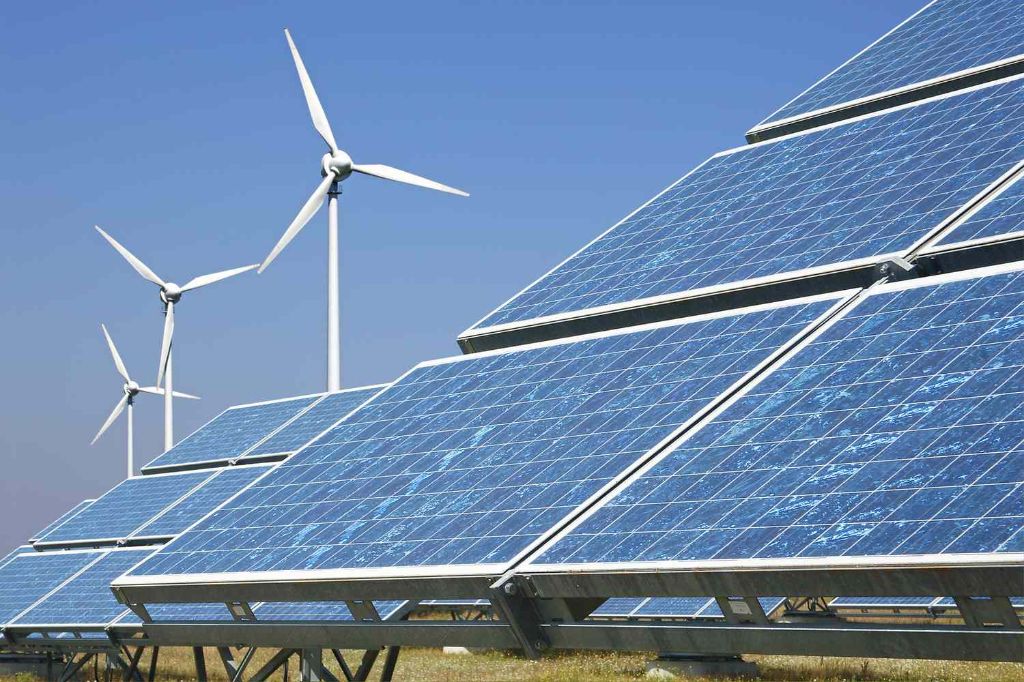
One of the major benefits of renewable energy is that it produces significantly less pollution than traditional fossil fuels. Unlike coal and oil, which emit harmful pollutants into the air and water, renewable energy sources such as solar, wind, and hydro power produce zero emissions during operation. This means that transitioning to renewable energy will have a significant positive impact on the environment, including improving air quality, reducing water pollution, and preserving natural habitats.
Another important advantage of renewable energy sources is that they are inherently more sustainable than fossil fuels. While oil, coal, and natural gas are finite resources that will eventually run out, renewable energy sources are essentially unlimited. The sun will continue to shine, the winds will continue to blow, and the rivers will continue to flow, providing a nearly endless supply of energy. This means that investing in renewable energy today is not only good for the present, but also for future generations.
In addition to its environmental benefits, renewable energy also has the potential to create new jobs and stimulate economic growth. According to a report by the International Renewable Energy Agency, the renewable energy sector employed more than 11 million people worldwide in 2018, and that number is expected to continue to grow in the coming years. This represents a significant opportunity for countries and industries to invest in clean energy and create new, sustainable employment opportunities.
Despite these many advantages, there are still challenges and obstacles that need to be addressed in order for renewable energy to become the dominant energy source. One of the biggest challenges facing renewable energy today is the issue of grid integration. Because renewable energy sources are often intermittent and variable (i.e. solar and wind power are dependent on weather conditions), integrating them into the power grid can be complicated and require new technologies and infrastructure.
Another issue that needs to be addressed is the cost of renewable energy. While the price of solar and wind power has been steadily declining in recent years, it is still more expensive than some traditional fossil fuels in many parts of the world. This can make it difficult for some countries and industries to make the switch to renewable energy, especially if they rely heavily on fossil fuels for economic growth.
Despite these challenges, the future of renewable energy looks very promising and is becoming an increasingly important part of the global energy mix. Over the coming years and decades, we can expect to see continued investment in clean energy sources, innovative new technologies, and policies and regulations aimed at promoting sustainable energy practices. By working together and making a concerted effort to transition to clean energy, we can help to create a brighter and more sustainable future for all.
Inspiring Success Stories Of Individuals And Communities Using Only Renewable Energy
There are countless inspiring stories of individuals and communities around the world who have successfully transitioned to completely renewable energy sources. For instance, in the small town of Greensburg, Kansas, a devastating tornado in 2007 destroyed over 90% of the town’s buildings and infrastructure. However, instead of simply rebuilding their town in the same way, the residents decided to embrace renewable energy and green technologies. Today, Greensburg is powered entirely by wind energy, with over 12 turbines producing enough electricity to not only power the entire town, but also to sell excess energy back to the grid. In addition to wind power, the town also boasts solar panels on many of its buildings, a public composting facility, and a state-of-the-art green school.
Another example is the island of Ta’u in American Samoa, which used to rely on imported diesel fuel for its electricity needs. In 2016, Tesla installed a microgrid system which consists of over 5,300 solar panels and 60 Tesla Powerpacks. Since its installation, the microgrid has been able to meet all of Ta’u’s electricity needs, even during periods of low sunlight. The system has not only reduced the island’s reliance on fossil fuels, but has also lowered energy costs and provided greater energy security for its residents.
Individuals have also made the transition to renewable energy on a smaller scale. Take for instance, Tom Dinwoodie, the founder of SunPower Corporation and a long-time advocate for renewable energy. He built his own passive solar home in California in 1978, which was one of the first homes to use solar panels for both electricity and hot water. Today, the home is still completely powered by solar energy, and in 2016, it won the prestigious Platinum LEED certification, the highest level of sustainability certification available.
These success stories demonstrate not only the feasibility of renewable energy, but also the multitude of benefits it can bring. By transitioning to renewable energy, communities and individuals can reduce their carbon emissions, improve air and water quality, create sustainable employment opportunities, and improve energy security. As renewable energy technologies continue to advance and become more affordable, it is likely that we will see many more success stories like these in the coming years.
Why It’S Important For Us To Embrace And Support Renewable Energy Initiatives
The importance of embracing and supporting renewable energy initiatives cannot be overstated. First and foremost, the use of renewable energy reduces our reliance on fossil fuels, which are non-renewable resources that cause environmental harm when they are extracted and burned for energy. Fossil fuel extraction and usage are one of the primary contributors to air and water pollution, land degradation, and climate change.
Furthermore, the transition towards renewable energy helps to create a more sustainable future for us and future generations to come. Unlike fossil fuels, which are finite resources that will eventually run out, renewable energy sources like solar, wind, and hydropower are infinitely renewable. By investing in renewable energy, we are investing in a future where energy availability is secure, inexpensive, and environmentally friendly.
Moreover, renewable energy sources can be harnessed locally, meaning that individuals, communities, and countries can take control of their own energy needs. This would mean that we would not have to rely on other countries for energy security, or engage in environmentally damaging activities like drilling or mining. We can take advantage of the natural resources available to us to meet our energy needs.
In addition, renewable energy initiatives can create sustainable employment opportunities. According to the International Labour Organization (ILO), the renewable energy sector employs over 11 million people worldwide. This sector is expected to continue growing, providing even more job opportunities. Jobs in renewable energy span a wide range of qualifications, from highly skilled technicians and engineers to manual laborers, offering opportunities for people with diverse skill sets and educational backgrounds.
Finally, embracing renewable energy initiatives can result in significant cost savings. Renewable energy sources like solar and wind power can be produced at lower costs than traditional fossil fuels. Also, once renewable energy infrastructure is installed, there are minimal ongoing costs, unlike fossil fuels that require ongoing extraction and transport.
Conclusion
From exploring the wide range of renewable energy sources to debunking common myths and misconceptions, it’s evident that renewable energy has immense potential to change the world’s energy landscape for the better. As we’ve seen, incorporating renewable energy into our daily lives not only benefits the environment, but also brings economic advantages and government incentives. Furthermore, with inspiring success stories emerging from individuals and communities who have embraced renewable energy, it’s clear that the future of clean energy is bright.
But beyond these tangible benefits, perhaps the most important reason for us to support and embrace renewable energy is its impact on our planet. With increasing awareness of climate change and its detrimental effects on our environment, it’s crucial that we take steps towards a more sustainable future. By switching to renewable energy sources, we can reduce greenhouse gas emissions and preserve our planet for generations to come.
As we continue to witness advancements in technology and increased investment in renewable energy initiatives, there’s no doubt that we are headed towards a greener future. It’s up to each one of us to play our part by making simple changes in our daily lives and supporting policies that promote clean energy. Let us be inspired by the success stories shared today and join hands in creating a world where renewable energy is the norm rather than the exception.
In conclusion, the truth about renewable energy is that it has limitless potential to transform our world for the better. By breaking free from traditional fossil fuels and embracing cleaner alternatives, we can create a more sustainable future for ourselves and for generations to come. So let’s do our part in supporting this powerful movement towards a greener tomorrow – together, we can make a difference.

